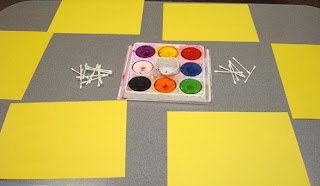
Spreading may not seem like it qualifies as a real cooking activity, but it's something preschoolers see their caregivers do for them everyday. In addition to using the muscles of the hand and wrist that are later used for writing, learning to spread with a knife can give a preschooler a sense of accomplishment. After all, knives are grown-up tools.
Here's what you need:
- A spreader: butter knives, plastic knives with dull edges, craft sticks, and tongue depressors all make good spreaders. If you want to avoid the knives, go for a fat tongue depressor because it's a little easier to control in small hands. Kids know when it's not a real knife, so use something shaped like a knife if you can.
- Something to spread: apple butter, cream cheese, butter, nut butter of your choice, and hummus are all good things. For the first experience choose something very easy to spread, like apple butter or hummus. Anything that's spreadable is a candidate. Wacky stuff will get more attention and discussion.
- Something on which to spread: celery sticks, crackers, bread, toast, and muffins are just the beginning. As with the substance to be spread you can get really creative. For the first experience avoid things that will fall apart with a lot of pressure. If there's a food you want the children to try but you think it might not be a huge hit, use it as the base for spreading and you'll get more takers. When the kids prepare the food themselves they're more likely to try it.
- Something to hold the spread: You can put a dab of spread on a plate, but that's hard for first-timers to control. Consider using single-serving cups or even small drinking cups. A communal container is not recommended because of all the licking that's likely.
Allergy Note: Many of the things most people like to spread (like cheese and peanut butter) contain foods children may be allergic to. Tailor your foods to your class so that no one is left out.












